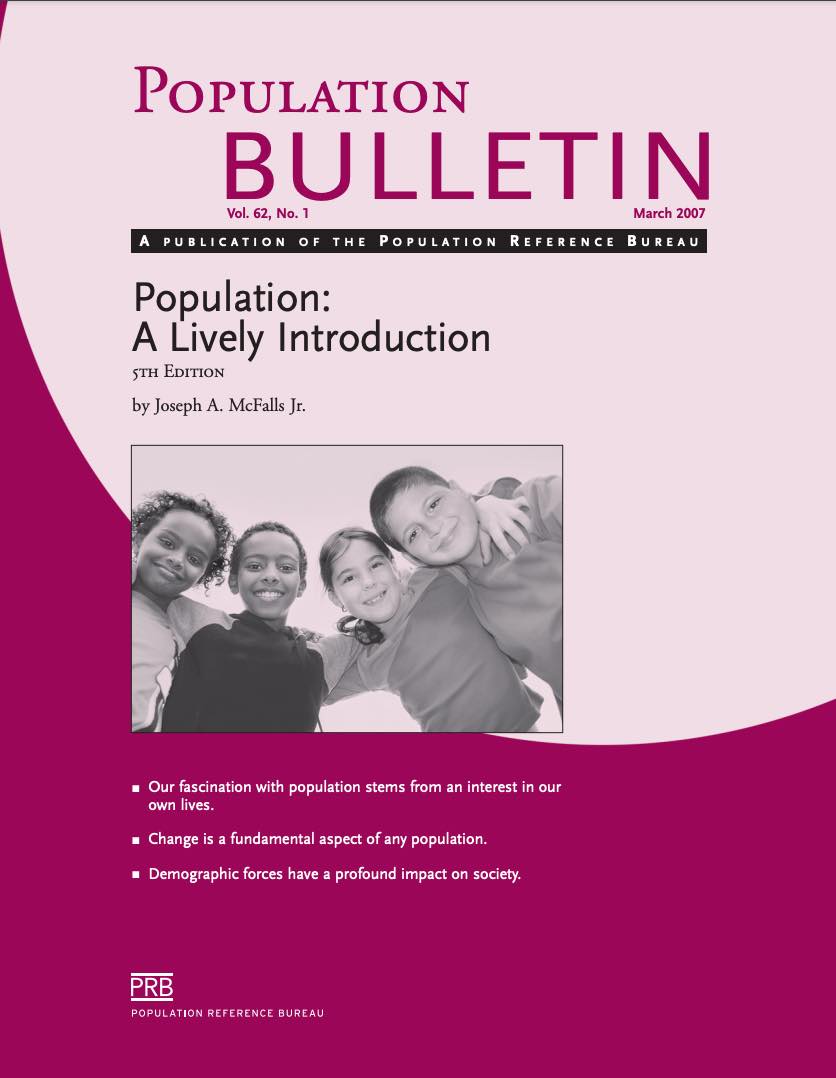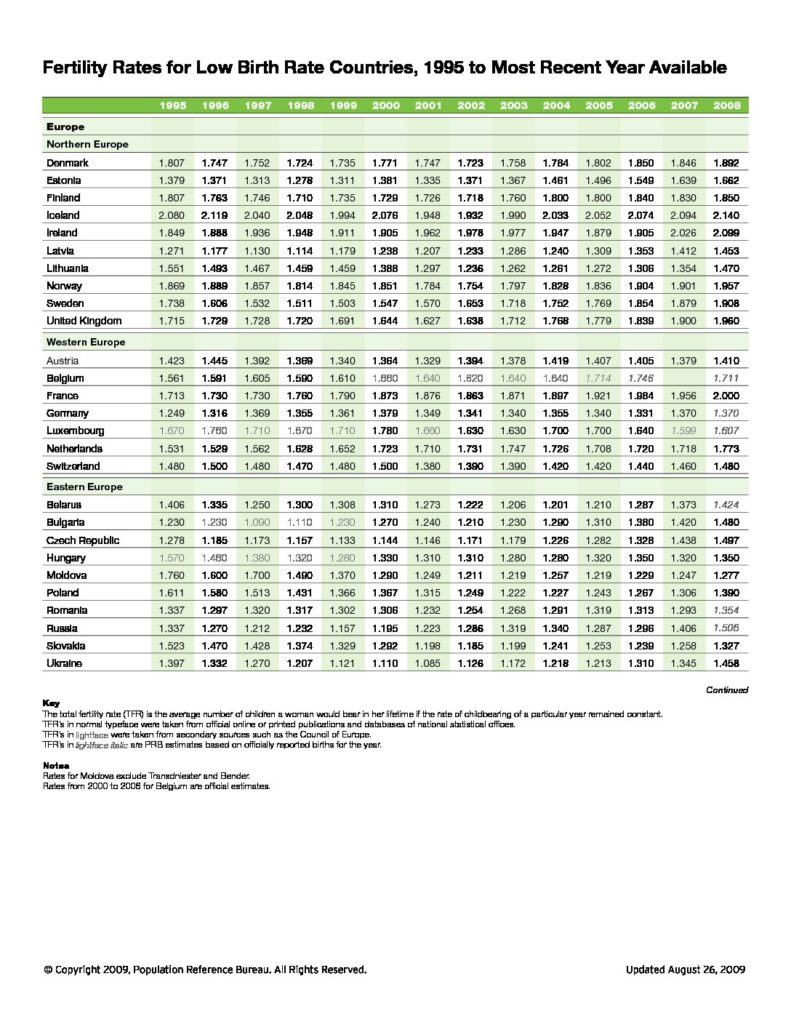Why Do Canadians Outlive Americans?
(2004) Over 250,000 Americans who died in 1998—roughly one of every ten U.S. deaths that year—would have survived had they been Canadian, according to a comparison of patterns of death between the two countries.
(2004) Over 250,000 Americans who died in 1998—roughly one of every ten U.S. deaths that year—would have survived had they been Canadian, according to a comparison of patterns of death between the two countries.

(2007)When where you born? How many brothers and sisters did you have? Where did your ancestors live? How long will you live?

Project: PACE: Policy, Advocacy, and Communication Enhanced for Population and Reproductive Health
The dividends from demographic change are not limited to the economy. PRB’s new interactive web feature shows how maturing age structures open a window of opportunity across four sectors—health, education, economic, and political.

(2009) "1.57 Shock" was a popular media phrase in Japan back in 1990 after the fertility rate (TFR) fell to its lowest value ever: 1.57 lifetime births per woman, recorded for 1989.1 This was even below the 1.58 children per woman reached during the inauspicious year of the Fire Horse—1966.

Project: PACE: Policy, Advocacy, and Communication Enhanced for Population and Reproductive Health
This web feature expands the concept of the demographic dividend to project four potential sets of benefits—in addition to economic growth, it outlines benefits in child survival, education, and political stability. A country’s likelihood of making substantial gains in each of these four sectors is tied to its age structure.
(2004) Within the next few years, the U.S. population — currently estimated at 293 million — is expected to reach twice its 1950 level of 151 million.
Project: PACE: Policy, Advocacy, and Communication Enhanced for Population and Reproductive Health
This web feature expands the concept of the demographic dividend to project four potential sets of benefits—in addition to economic growth, it outlines benefits in child survival, education, and political stability.
(2002) In a move that marks the Caribbean's success in various spheres of socioeconomic activity, international funding agencies are reducing their financial support for the region's sexual and reproductive health programs.

The International Day of Zero Tolerance for Female Genital Mutilation/Cutting (FGM/C) is an international awareness day sponsored by the United Nations (UN).

Project: Center for Public Information on Population Research (CPIPR)
Neighborhoods that are more walkable, with accessible public transportation, and amenities such as parks that promote physical and social activity are associated with better health.